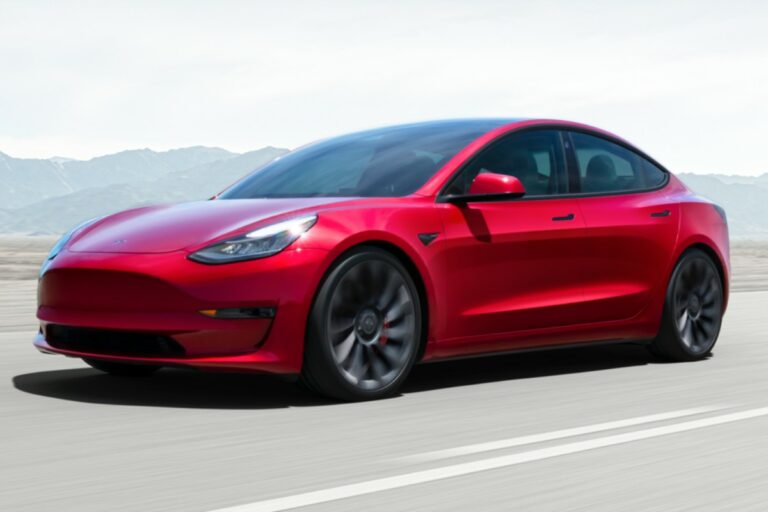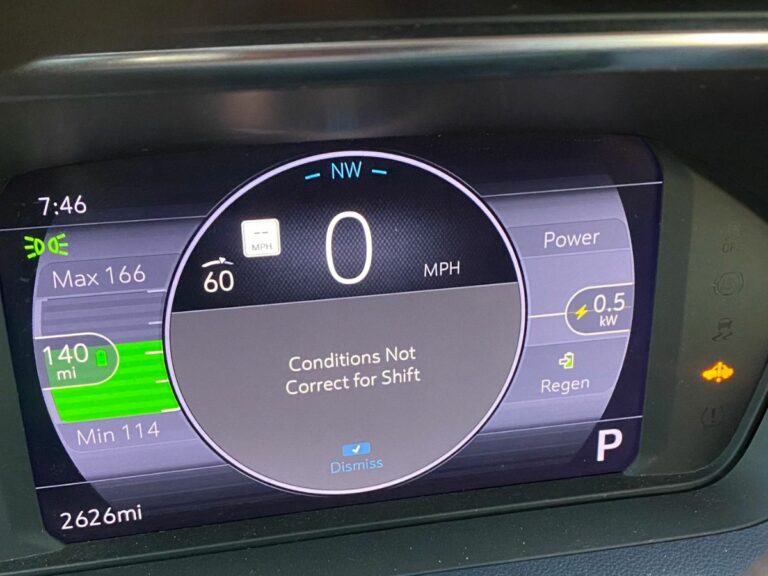Can Tesla Drive in Carpool Lane Without Sticker?
If you’re reading this, there’s a good chance you’ve been behind the wheel of a Tesla or, at the very least, admired one from a distance. And you might be wondering, “Can a Tesla cruise through the carpool lane without that telltale sticker slapped on its back?” It’s a valid query, and one that many drivers are asking as the electric vehicle (EV) revolution continues to grow.
This isn’t just about the allure of zipping past regular lanes or its convenience; it’s also about understanding the privileges and responsibilities of owning such an innovative piece of machinery.
In this blog post, I’ll break down everything you need to know about Teslas, carpool lanes, and those stickers. Whether you’re an experienced Tesla driver or just starting to consider joining the EV family, this guide’s for you. Let’s dive right in!
Quick answer: Yes, some states allow Tesla and other electric vehicles to drive in carpool lanes without a sticker, but regulations vary, making it essential to check local guidelines for specific eligibility criteria.
What Determines Carpool Lane Eligibility?
Ah, the coveted carpool lane – that special lane where, on a congested day, vehicles seem to have a magical pass to speed past the snarling traffic. But what gives a car the golden ticket to use this lane? Let’s break it down.
First and foremost, carpool lanes were initially designed for vehicles carrying multiple passengers. The primary goal? Reduce the number of cars on the road and, consequently, cut down on traffic congestion and emissions. Most regions have a minimum passenger requirement, usually two or three people including the driver, to qualify.
Over time, as environmental concerns grew, various states began to see the value of promoting cleaner modes of transportation. This led to the introduction of stickers and permits.
Electric vehicles (EVs), hybrids, and other low-emission vehicles might be given the green light to use carpool lanes, regardless of passenger count, provided they display the right sticker or permit.
Not every vehicle can use the carpool lane, even if it’s loaded with passengers. For example, big rigs and trailers are often excluded regardless of how many people they’re hauling.
While the original concept of the carpool lane was straightforward, evolving environmental goals and the rise of cleaner vehicles like Teslas have added layers to its rules. Always remember the specifics can vary from state to state, so it’s crucial to be in the know about local regulations before you hop into that faster lane.

Tesla and Its Green Credentials
When the name “Tesla” pops up, what’s the first thing that comes to mind? For many, it’s innovation. For others, it’s Elon Musk’s audacious vision. But for most, it’s the game-changing impact this brand has had on sustainable transportation. Let’s delve into what makes Tesla stand out in the realm of green driving.
1. Electric Vehicle Pioneer
Tesla isn’t just another car manufacturer; it’s a frontrunner in the electric vehicle (EV) industry. While other automakers were tiptoeing around the idea, Tesla took the bold leap, focusing exclusively on creating high-performance, fully electric cars. The result? A range of vehicles that emit zero tailpipe pollutants.
2. Battery Technology
One of Tesla’s crowning achievements is its advancements in battery technology. Their cars are equipped with cutting-edge batteries that offer an impressive range and employ eco-friendly materials and production methods, further minimizing their environmental footprint.
3. Self-Sustainability Goals
Tesla’s commitment to green goes beyond just cars. They’re continually investing in solar technologies and energy storage solutions. The aim? A holistic approach to a sustainable future where your Tesla car is powered by clean energy, possibly generated by Tesla solar panels on your own roof.
4. Reducing Greenhouse Gas Emissions
The significance of driving an EV is monumental when you think about emissions. Traditional vehicles emit considerable greenhouse gases, contributing to climate change. On the other hand, a Tesla cuts out these tailpipe emissions, leading to cleaner air and a healthier environment.
To sum it up, owning a Tesla is not just about enjoying a luxury ride with the latest tech—it’s a conscious decision to be a part of the shift towards a greener planet. While other vehicles might have the privilege of sporting an eco-friendly sticker, Teslas truly embody the spirit of what those stickers represent.
State-by-State Regulations
Driving a Tesla or any other electric vehicle (EV) isn’t just about plugging in instead of filling up; it also comes with the potential benefit of accessing the carpool lane. But the rules? They aren’t universal. Here’s a glance at how regulations can vary across the U.S., keeping in mind that these are general guidelines and might be subject to changes.
1. California
Known for its stringent emission standards, California has been a champion of clean transportation.
Among other qualifying low and zero-emission vehicles, Tesla drivers can apply for Clean Air Vehicle (CAV) decals that grant them access to carpool lanes regardless of the number of passengers. However, these decals have expiration dates and various colors that signify different criteria.
2. New York
In the Empire State, EVs are given a pass to use the Long Island Expressway’s High Occupancy Vehicle (HOV) lanes, regardless of the number of passengers. But, remember, this doesn’t necessarily extend to all carpool lanes in the state.
3. Florida
Down in the Sunshine State, EVs, hybrids, and other energy-efficient vehicles can access the High Occupancy Toll (HOT) lanes for free or at a reduced cost. Still, it’s essential to have the appropriate decal.
4. Washington
Tesla drivers in Washington State can enjoy the HOV lanes without any passenger requirements. However, they must ensure they have displayed the proper clean alternative fuel vehicle (CAFV) decal.
5. Arizona
EV owners in Arizona can apply for a special blue license plate, which grants them the privilege of using the HOV lanes irrespective of passenger count.
6. Other States
Many states, including Georgia, Colorado, and Virginia, have their own sets of rules and perks for EV drivers. While some provide unrestricted carpool lane access, others offer benefits like reduced toll fees or tax incentives.
While this list covers some of the key players, it’s crucial for Tesla owners and all EV enthusiasts to check the specific regulations of their state. And remember, even within a state, rules can differ by county or specific highway, so always stay updated to ensure you’re in the right lane—both legally and ethically.
The Controversy: Carpool Lane Access without Multiple Passengers
At their inception, carpool lanes were hailed as a groundbreaking solution to traffic congestion. By incentivizing multi-passenger commuting, these lanes aimed to reduce the number of cars on the road. However, the rise of electric vehicles, including Teslas, has sparked a debate that seems to divide many.
The Argument in Favor of EVs in Carpool Lanes
- Environmental Impact: Electric vehicles, without a doubt, are kinder to the environment than their gasoline-powered counterparts. By allowing them in carpool lanes, states send a strong message about prioritizing green transportation.
- Incentivizing EV Adoption: Easier carpool lane access can be a significant factor for potential EV buyers. If this perk can sway more people towards electricity, isn’t that a win for the environment?
- Economic Considerations: Encouraging the adoption of EVs potentially reduces the country’s reliance on fossil fuels. This could have both economic and geopolitical benefits.
The Counter-Argument
- Defeating the Original Purpose: The primary goal of carpool lanes was to reduce the number of vehicles, not just emissions. Allowing single-passenger EVs can sometimes lead to these lanes being just as congested as regular ones.
- Unfair Advantage: Some argue that allowing primarily high-end EVs like Teslas into carpool lanes gives wealthier drivers an undue advantage. Should economic status afford someone a faster commute?
- Potential for Misuse: There’s a fear that granting EVs unrestricted carpool lane access might be exploited. For instance, people might buy an older, cheaper electric vehicle just for the carpool lane perk, without any real commitment to sustainable transportation.
This debate doesn’t have a one-size-fits-all answer. What’s clear is that as EV adoption rates climb and our roads evolve, so too will the conversation surrounding carpool lane access and as with most things in the dynamic world of transportation, finding the balance between promoting sustainable choices and ensuring road equity is a journey, not a destination.

The Controversy: Carpool Lane Access without Multiple Passengers
At their inception, carpool lanes were hailed as a groundbreaking solution to traffic congestion. By incentivizing multi-passenger commuting, these lanes aimed to reduce the number of cars on the road. However, the rise of electric vehicles, including Teslas, has sparked a debate that seems to divide many.
The Argument in Favor of EVs in Carpool Lanes
- Environmental Impact: Electric vehicles, without a doubt, are kinder to the environment than their gasoline-powered counterparts. By allowing them in carpool lanes, states send a strong message about prioritizing green transportation.
- Incentivizing EV Adoption: Easier carpool lane access can be a significant factor for potential EV buyers. If this perk can sway more people towards electricity, isn’t that a win for the environment?
- Economic Considerations: Encouraging the adoption of EVs potentially reduces the country’s reliance on fossil fuels. This could have both economic and geopolitical benefits.
The Counter-Argument
- Defeating the Original Purpose: The primary goal of carpool lanes was to reduce the number of vehicles, not just emissions. Allowing single-passenger EVs can sometimes lead to these lanes being just as congested as regular ones.
- Unfair Advantage: Some argue that allowing primarily high-end EVs like Teslas into carpool lanes gives wealthier drivers an undue advantage. Should economic status afford someone a faster commute?
- Potential for Misuse: There’s a fear that granting EVs unrestricted carpool lane access might be exploited. For instance, people might buy an older, cheaper electric vehicle just for the carpool lane perk, without any real commitment to sustainable transportation.
This debate doesn’t have a one-size-fits-all answer. What’s clear is that as EV adoption rates climb and our roads evolve, so too will the conversation surrounding carpool lane access. As with most things in the dynamic world of transportation, finding the balance between promoting sustainable choices and ensuring road equity is a journey, not a destination.
Wrapping It Up
Navigating the world of carpool lanes as a Tesla owner isn’t just about enjoying the breeze in the faster lane; it’s about understanding the ever-evolving rules and responsibilities. As we’ve explored while owning a Tesla or any EV indeed comes with its green perks, it also brings with it the duty to be well-informed.
Whether it’s recognizing the environmental ethos behind your vehicle, keeping up with state-specific regulations, or understanding the broader debates around carpool lane access is a great idea.







